To celebrate my blog’s 10th anniversary, I’m looking at what a dime would buy in American restaurants of the 19th and 20th centuries.
It’s not too surprising that a meal could be bought for a dime through much of the 19th century. BUT, does that mean that a restaurant meal was much cheaper then than today?
Not necessarily. For example, compare the situation of unskilled laborers in 1869 and now.
In New York City in 1869, when the average hourly wage for an unskilled laborer was about 15 cents, a meal of meat or fish with two slices of bread and a potato could be had for 10 cents. Adding pie, the bill came to 15 cents. A laborer had to work one hour to pay for this meal. And, any restaurant with prices this low – most were more expensive – was almost certainly dirty and smelly.
Today, by contrast, the U.S. Bureau of Labor Statistics reports that $16.60 is the median hourly wage for an unskilled construction worker, meaning half of workers surveyed make less than that and half make more. Using this as a typical wage, we also have to consider that various taxes are taken out resulting in a smaller net amount, something that was not the case in1869. Subtracting $5.00 gives a net wage of $11.60. At McDonald’s a regular hamburger costs .95, but let’s make it a double for $1.89; small fries are $2.09, and an apple pie is $1.14. The total comes to $5.12. So a laborer has to work less than one-half hour to pay for what is probably a more substantial meal than in 1869. And – this is not intended as an advertisement for McDonald’s — the restaurant is undoubtedly cleaner.
Before Prohibition cheap restaurants had a hard time competing with saloons’ free lunches in many parts of the country. According to research on urban working-class saloons (Jon M. Kingsdale, American Quarterly, October 1973), along a 4-mile section of a major street in Chicago in the 1890s there were 115 saloons with free lunches, but only five 10-cent restaurants and twenty five charging 20 to 35 cents. Brewers bought food cheaply in large quantities and furnished it to saloons at cost.
Not surprisingly, it became harder to find 10-cent meals, or even single dishes, in 20th-century restaurants. And, of course, even in the Depression people who had jobs made more per hour than they did in the 19th century, making a 10-cent sandwich, for example, a better deal.
But in the 1970s it was basically impossible to find anything on a menu for ten cents. (But, keeping in mind the McDonald’s example above, it was possible to find something in a restaurant that cost no more than one hour’s wages.)
Here are some samples of what you could get for a dime in American eating places over the years:
1854 A New York City temperance restaurant tried to lure patrons away from strong drink with plates of meat for 10 cents, as well as tea, coffee, and cocoa for 3 cents a cup. Since a typical laborer’s wage was even lower then than in 1869, this was a bargain only in the sense that prices were higher in most other restaurants.
 1869 In contrast to New York City, a workman could do pretty well in San Francisco, according to one newspaper account that asked, “Where else in the world can a man sit down to green-turtle steak, bread and butter, celery, sauces, etc., . . . with but ten cents in his pocket? A very popular cheap eatery was in the What Cheer House which served over 1,000 patrons a day in dining rooms crowded with people waiting to grab a vacated seat. On average, workers in California made 60% more than New Yorkers, about $2.00 a day.
1869 In contrast to New York City, a workman could do pretty well in San Francisco, according to one newspaper account that asked, “Where else in the world can a man sit down to green-turtle steak, bread and butter, celery, sauces, etc., . . . with but ten cents in his pocket? A very popular cheap eatery was in the What Cheer House which served over 1,000 patrons a day in dining rooms crowded with people waiting to grab a vacated seat. On average, workers in California made 60% more than New Yorkers, about $2.00 a day.
1884 At the Novelty Lunch Room in Grand Rapids MI a hungry worker could get Hot Griddle Cakes and Maple Syrup or Pork and Beans for 10 cents. A nickel more bought pie or cake. Michigan’s median daily wage for a laborer was then $1.42.
 1889 Boston was said to be the home of sandwiches of all kinds, with Wyman’s taking credit as originator of the Fried Egg Sandwich. As noted on this trade card from the 1880s, Wyman’s specialty was a ten-cent lunch. At this time Massachusetts’ median daily wage for a laborer was only $1.22, about 12 cents an hour.
1889 Boston was said to be the home of sandwiches of all kinds, with Wyman’s taking credit as originator of the Fried Egg Sandwich. As noted on this trade card from the 1880s, Wyman’s specialty was a ten-cent lunch. At this time Massachusetts’ median daily wage for a laborer was only $1.22, about 12 cents an hour.
1895 Eating places known as “Beefsteak Johns” in NY sold single dishes such as roast beef and potato for 10 cents, while a regular dinner costing 20 cents had meat and potato plus soup, tea or coffee, and pie or pudding. But a few years later a letter to the editor of the Daily People signed “Hamburger Steak” charged Beefsteak Johns with paying low wages and serving bad food. It ended with “Forward! To the days of the Socialist Republic when the food of the workers will not be adulterated by the little business man in the restaurant line.”
1904 Fairgoers generally expected high prices for food at world’s fairs, but at the St. Louis World’s Fair the Universal Lunch Co. ran barbecue stands selling hot beef sandwiches for ten cents.
1910 Prices were lower in self-service eating places such as the newly opened Servself Lunch in Detroit’s Majestic Building which billed itself as the finest quick lunch in America. Most items, including soup, corned beef hash, pork and beans, macaroni and cheese, chicken pie, boiled eggs, sandwiches, corn flakes, baked apples, griddle cakes, and pastry, cost a dime each.
1922 Cooper’s Cafeteria in the college town of Champaign IL offered weekend specials such as Veal Loaf with Tomato Sauce or Creamed Chicken on Toast for 10 cents, while most side dishes and desserts cost 5 cents.
1928 and 1929 At Macy’s Department Store in New York, where it was “Smart to Be Thrifty,” the store shaved a penny off items that would have been 10 cents in most restaurants, such as Vegetable Soup, almost all pies and cakes, and a variety of beverages including Coca-Cola and Orange or Raspberry Phosphate. Each cost 9 cents. But a 1929 menu from Schrafft’s at 181 Broadway in New York listed absolutely nothing for 10 cents. The average hourly wage for manufacturing workers before taxes was about 56 cents in both years.
1932 The White Castle chain adopted a promotion to attract women customers (who generally avoided the restaurants). They were mailed coupons by a hostess named “Julia Joyce” that offered five small hamburgers to carry out for only a dime. The economy was depressed and the average hourly pre-tax wage for factory workers had dropped to 47 cents.
1941 With the U.S. supplying food to Great Britain for the war effort, the cost of food went up. Restaurants responded by raising prices. In Springfield IL a Wimpy’s hamburger stand increased the price of its 10-cent burgers to 12 cents.
1950 In New York City the Automat raised the price of coffee from 5 to 10 cents. At the Children’s Milk Bar in the Lord & Taylor department store, children could snack on milk and crackers for 10 cents.
 1951 In Beaumont TX the Pig Stand was selling hamburgers that cost 10 cents before WWII for 25 cents. The average hourly pre-tax wage for manufacturing workers was $1.59.
1951 In Beaumont TX the Pig Stand was selling hamburgers that cost 10 cents before WWII for 25 cents. The average hourly pre-tax wage for manufacturing workers was $1.59.
1962 Even at inexpensive restaurants and drive-ins, beverages such as coffee or a small soda were usually the only items priced at 10 cents.
1965 A Burger Chef in Baton Rouge LA celebrated its 6th anniversary with 10-cent hamburgers. Ordinarily they cost 15 cents.





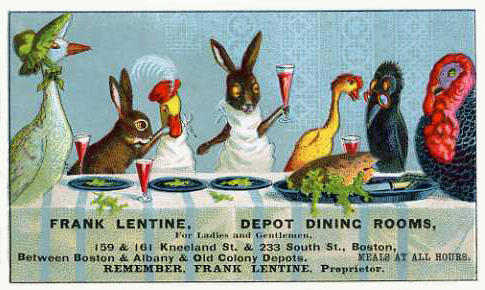
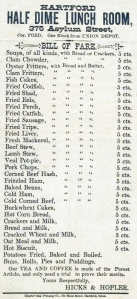
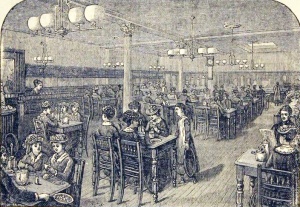
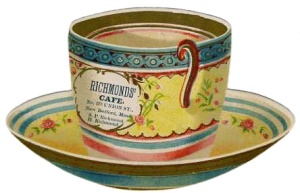
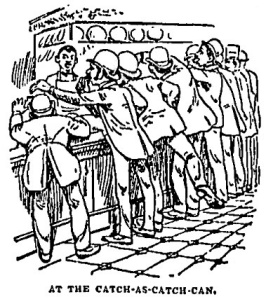
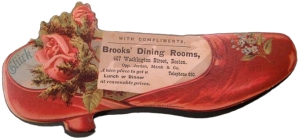














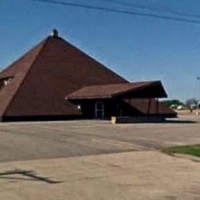
 It's great to hear from readers and I take time to answer queries. I can't always find what you are looking for, but I do appreciate getting thank yous no matter what the outcome.
It's great to hear from readers and I take time to answer queries. I can't always find what you are looking for, but I do appreciate getting thank yous no matter what the outcome.


